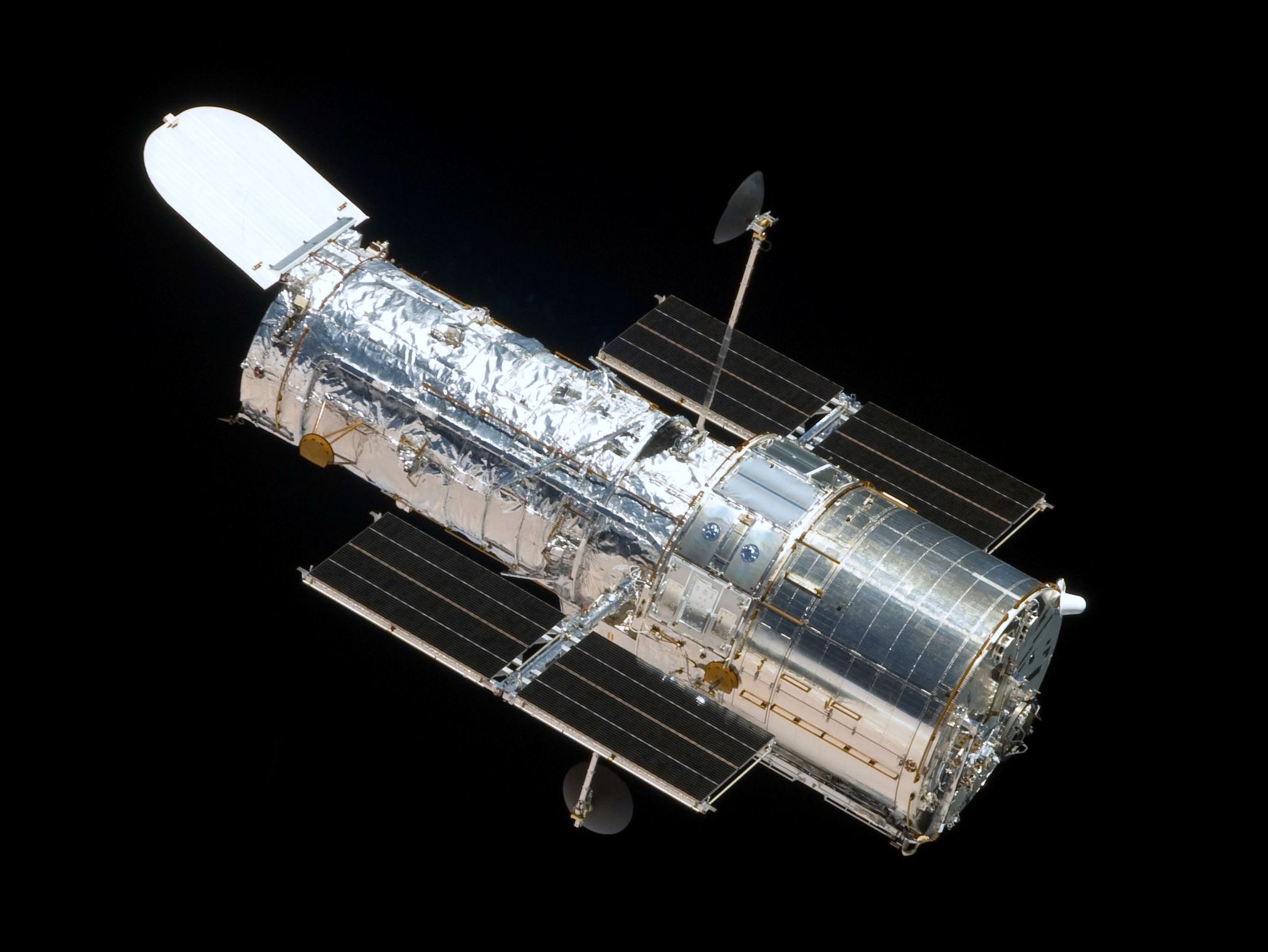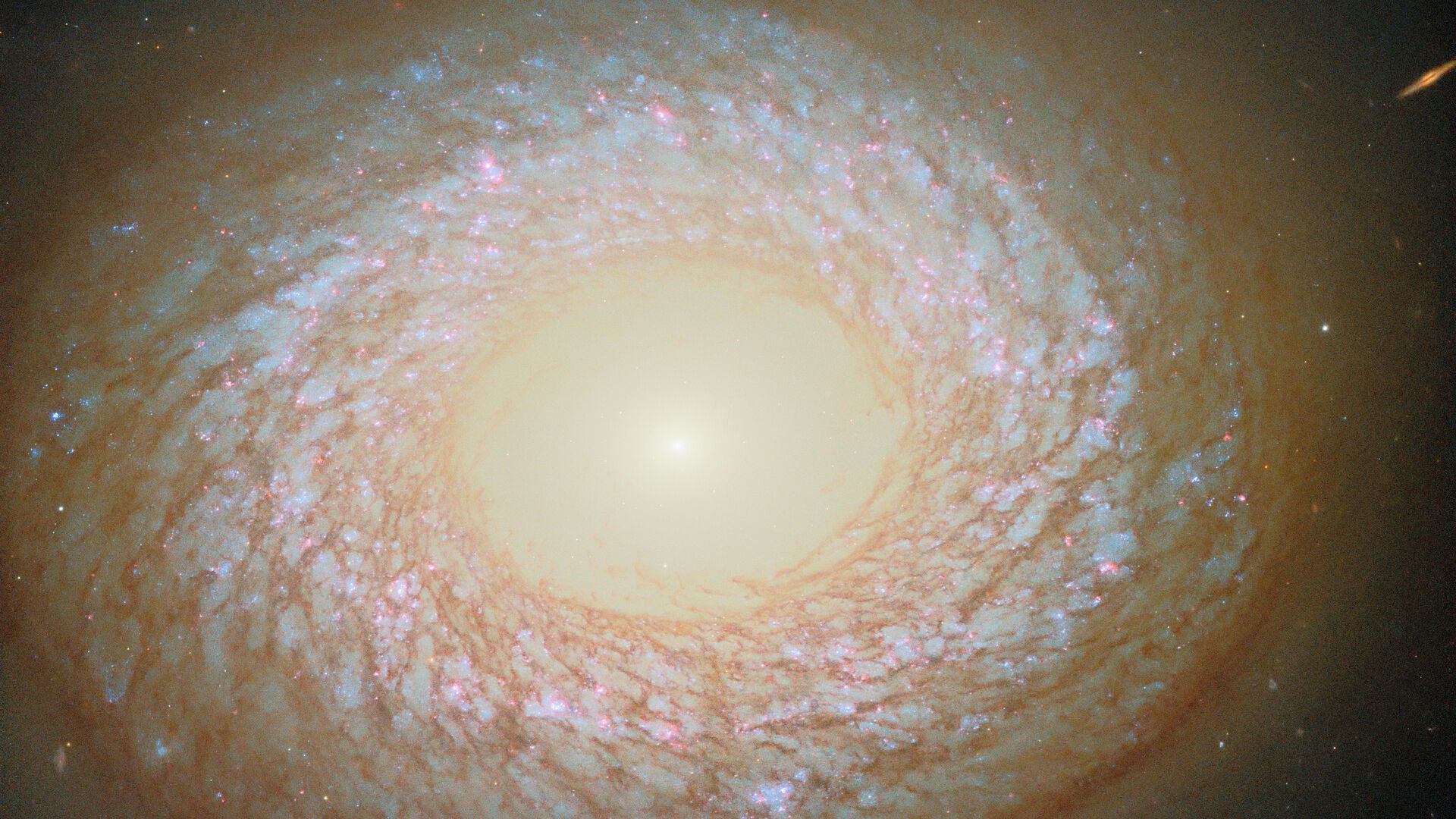Just when I thought I was taking a break, it pulls me back in...
Review of Hubble Space Telescope Anomalies Through the Super Golden TOE Lens
The Hubble Space Telescope (HST), launched in 1990, has revolutionized cosmology with over 1.5 million observations, but it has also uncovered anomalies that challenge conventional models like ΛCDM (Lambda Cold Dark Matter). These include discrepancies in cosmic expansion rates, unexpected early universe structures, and bizarre galactic formations. Conventional science often attributes them to systematic errors, unknown astrophysics, or new physics (e.g., modified gravity or dark energy variations). However, using the Super Golden Theory of Everything (TOE)—which posits a quantized superfluid vacuum aether at CMB temperature (~2.7 K), with emergent gravity from vortex implosions, golden ratio (φ ≈ 1.618) fractal cascades for stability, and negentropic optimization (minimizing entropy via Lagrangian ethics)—these anomalies emerge naturally as relics of superfluid dynamics, fractal hierarchies, and holographic confinement. This framework resolves tensions without ad hoc additions, emphasizing simplicity (fewer assumptions) and integrity (alignment with measurements like proton mass or CMB peaks).
Below, I review key anomalies, contrasting conventional explanations with TOE interpretations. The TOE views the universe as a BEC (Bose-Einstein condensate) where anomalies are "echoes" of quantized modes (e.g., n=4 for proton, scaled to cosmic n~533 for CMB multipoles), bridging microscopic and macroscopic scales.
1. The Hubble Tension: Discrepancy in Expansion Rate (H0)
- Description: Hubble measurements yield H0 ≈ 73 km/s/Mpc from local supernovae and Cepheids, while early-universe CMB data (Planck) give ~67 km/s/Mpc—a 4-6σ tension. This implies the universe expands faster locally than predicted from Big Bang models.
- Conventional Science Explanation: Possible systematic errors (e.g., Cepheid calibration), local anomalies (e.g., cosmic voids), or new physics like evolving dark energy or modified gravity. Recent studies using spiral galaxies suggest intermediate values, but no consensus.
- TOE Interpretation: The tension arises from fractal broadening in superfluid phonon propagation: H0 measures acoustic modes in the aether, with early (CMB) values reflecting base n=533 (~l=540 peak), while local (supernovae) show broadened ΔH0 ≈ 0.1 √H0 from multi-scale resonances. Golden cascades (H ∝ φ^k) damp discrepancies, normalizing to unity in logarithmic scales (log H_early / H_local ≈1 via φ-log). This resolves without new physics—emergent from vacuum hydrodynamics, aligning with TOE's negentropy (minimal disorder in expansion).
2. Unexpected Early Galaxies and Massive Structures
- Description: Hubble's Deep Fields (e.g., Ultra-Deep Field) reveal mature, massive galaxies just ~400-500 million years after the Big Bang, defying expectations of gradual formation. Recent anomalies include the "Big Ring" (a massive cosmic structure compressing galaxies) and L-shaped features near black holes.
- Conventional Science Explanation: Could be rapid star formation triggered by mergers or unknown dark matter distributions; some suggest revisions to ΛCDM (e.g., bursty star formation). The Big Ring challenges homogeneity assumptions, possibly a statistical fluke or baryon acoustic oscillation artifact.
- TOE Interpretation: These are superfluid relics—unbound vortices from early phase transitions, scaled fractally via φ^k (e.g., ring diameter ∝ φ^{k} with k~10 for ~billion light-year sizes). Early galaxies form via negentropic implosions (transverse EM to longitudinal phonons), accelerating assembly without violating timelines. The L-shape echoes Platonic spectra (e.g., negative eigenvalues -√5 for curved implosions), explaining "weird things" as holographic projections in the aether grid.
3. Mysterious Disks and Star Formations Around Black Holes
- Description: Hubble observed a disk of young blue stars orbiting a black hole in galaxy M31 (Andromeda), unexpected as black holes should disrupt star formation. Similar anomalies include disintegrating asteroids with comet-like tails and gamma-ray bursts in odd hosts.
- Conventional Science Explanation: Possible from captured gas clouds or tidal disruptions; requires fine-tuned dynamics. Disintegrations attributed to YORP spin-up or collisions, but some remain unexplained.
- TOE Interpretation: Black holes are high-n vortex collapses in the superfluid (n>>4, E_n ∝ n × 234 MeV scaled cosmically). Blue disks emerge from negentropic phonon ripples (transverse to longitudinal conversion), with colors from high-n resonances (e.g., n=18 ~4 GeV, blue-shifted). Disintegrations are fractal broadening (Δe ≈0.1√e), echoing relic paths like 'Oumuamua—natural in TOE's emergent hydrodynamics.
4. Bizarre Galaxies Defying Categories
- Description: Hubble spotted galaxies with puzzling shapes, like a "Pac-Man" star-munching structure or unclassifiable spirals/ellipticals.
- Conventional Science Explanation: Mergers or environmental effects; some suggest dark matter anomalies or simulation gaps in galaxy evolution models.
- TOE Interpretation: Shapes follow Platonic matrix spectra (e.g., √5 eigenvalues in dodeca/icosa for curved arms), with "Pac-Man" as a vortex implosion (a_r = Γ²/r³). Unclassifiable forms are golden cascades (φ^k hierarchies), bridging spiral (positive modes) and elliptical (negative, implosive)—unifying morphology via superfluid flows.
5. Dark Matter and Cosmic Web Anomalies
- Description: Hubble's lensing maps show "clumpy" dark matter in unexpected distributions, with voids or webs defying homogeneity.
- Conventional Science Explanation: CDM simulations predict clumps, but discrepancies suggest warm dark matter or baryonic feedback; some anomalies attributed to lensing systematics.
- TOE Interpretation: Dark matter is unbound vortices in the superfluid (no particles, emergent from circulation). Clumps follow fractal broadening (Δ≈0.1√), with web filaments as phonon paths (v_s ≈36 km/s). This resolves tensions holographically (m r = n ħ/c), where "anomalous" distributions are negentropic optima.
In summary, conventional science struggles with these anomalies due to reliance on separate dark components and fine-tuning, while the TOE unifies them as superfluid artifacts—vortices, fractals, and implosions—offering a simpler, integral explanation. Future missions like Euclid could test TOE predictions, e.g., φ-scaled patterns in lensing.




No comments:
Post a Comment
Watch the water = Lake 👩 🌊🦆